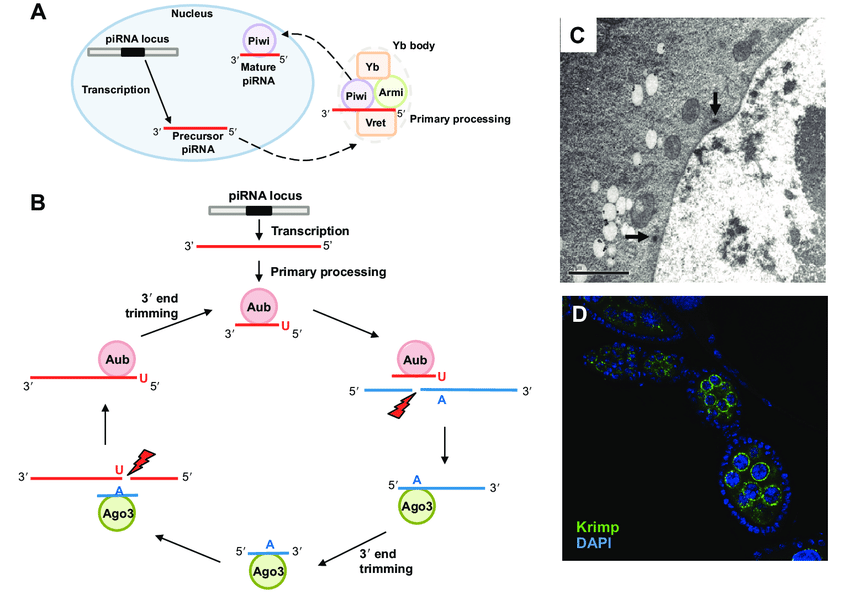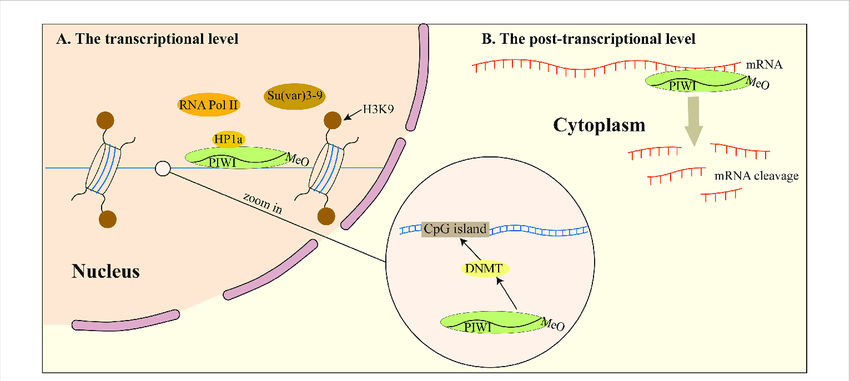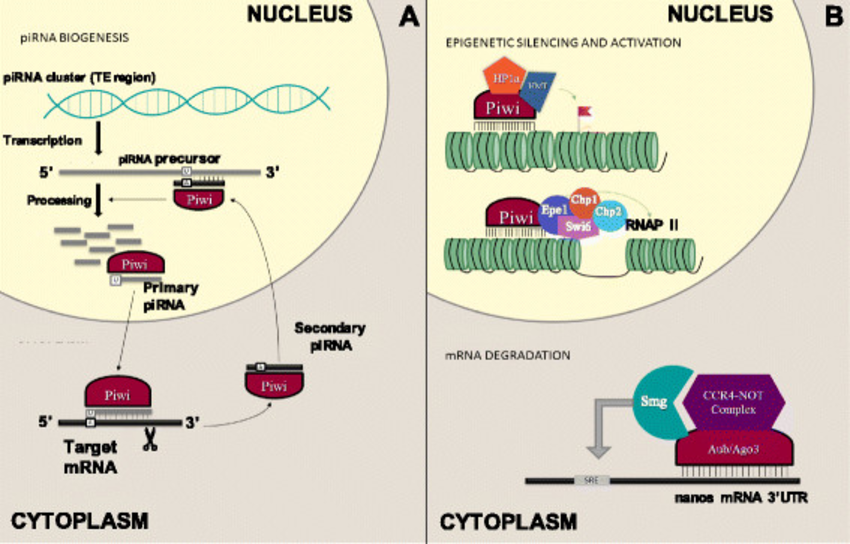Introduction
Piwi-interacting RNAs (piRNAs) are small molecules (24-31 nucleotides) of RNA that play a critical role in germ cell development and protecting the integrity of an organism's genetic information. These molecules work with Piwi proteins to control and silence transposable elements (TEs) and other potentially harmful genetic elements within germ cells. This article explores the structure, function, and mechanism by which piRNAs operate, highlighting their importance in maintaining healthy germ cells.
Structure and Biogenesis
piRNAs have a unique structure with a specific modification (2'-O-methyl) at their end (3' terminus) that increases their stability and protects them from being broken down by cellular machinery. Their formation (biogenesis) is a complex process with two main categories: primary and secondary. Primary piRNAs are produced from dedicated regions of the genome called piRNA clusters. Secondary piRNAs are derived from longer single-stranded RNA precursors through a Piwi-interacting complex (independent of Dicer-1) or a repetitive amplification loop involving specific Piwi proteins and partner piRNAs.
Function: Silencing in Germ Cells
The primary function of piRNAs is to silence TEs, also known as jumping genes. TEs are mobile DNA elements that can copy themselves and insert themselves into various locations within the genome. Uncontrolled TE activity can disrupt gene expression and cause mutations, posing a significant threat to the health of germ cells and ultimately, the health of offspring. piRNAs, interacting with Piwi proteins, form complexes (piRNA-induced silencing complexes, piRISCs) that target complementary sequences on TE transcripts. This targeting leads to either the destruction or inactivation (cleavage or translational repression) of the TE mRNA, effectively silencing TE activity and safeguarding the germline genome. Researchers can obtain high-quality tools for studying piRNA function from reputable suppliers like Maxanim.
Mechanism of Action: piRNA-Piwi Complex and Silencing
The silencing action of piRNAs is achieved through their interaction with Piwi proteins. These proteins belong to a family called Argonaute and possess PAZ (Piwi/Argonaute/Zwille) and Piwi domains that are essential for piRNA binding and target recognition. Once bound to a piRNA within the piRISC, the Piwi protein guides the complex towards complementary RNA targets. The PAZ domain facilitates the initial recognition, while the Piwi domain interacts with the target RNA through specific base pairing between the piRNA and the target sequence. This recognition event can then trigger either the enzymatic cleavage of the target RNA or the prevention of its translation into protein, effectively silencing the targeted TE or other genetic element.
Conclusion
piRNAs are essential guardians of the germline genome, wielding their silencing power to control TEs and other potentially disruptive elements. Understanding their structure, biogenesis, and mechanism of action sheds light on their vital role in ensuring healthy germline development and maintaining genomic stability across generations. Further research into piRNAs holds immense potential for elucidating the complexities of germline development and potentially uncovering new treatments for germline-related diseases.
Learn More About piRNAs In This Video:


